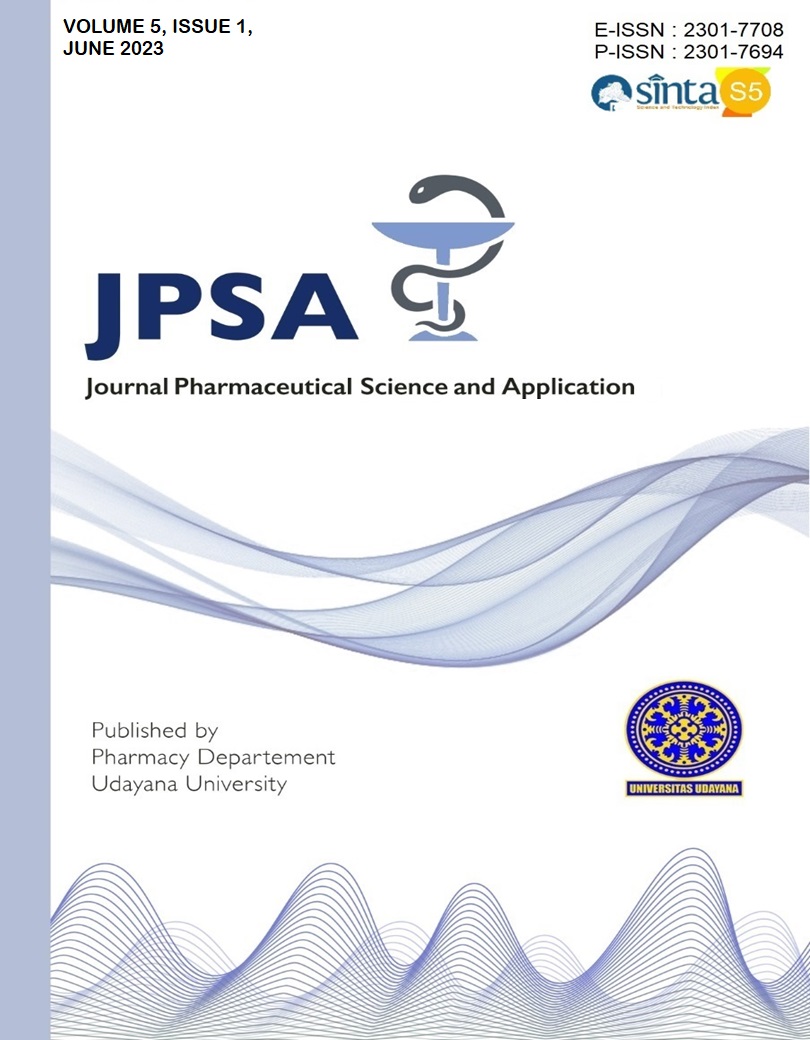A REVIEW OF ANTIBACTERIAL POTENTIAL OF BANANG-BANANG PLANT (Xylocarpus granatum J.Koenig) EXTRACT
Abstract
Background: Xylocarpus granatum has been used traditionally by coastal communities to treat various diseases. It is known that this plant contains secondary metabolites with various pharmacological activities, including as an antibacterial. Objective: This review article aims to provide information regarding the potential antibacterial activity of banang-banang plants and to summarize the content of compounds that have antibacterial properties and their mechanism of action. Methods: The preparation of this article is through literature studies from various international journals and national journals obtained online by taking into account predetermined inclusion and exclusion criteria. Then it was selected and studied further to obtain data related to the antibacterial activity of banang-banang plants and the content of secondary metabolites that have potential as antibacterials. Results: The banang-banang plant, especially the leaves, roots, fruit, seeds, fruit flesh, fruit peels, stems and bark with its secondary metabolites can inhibit several bacterial species such as Staphylococcus epidermidis, Pseudomonas aeruginosa, Escherichia coli, Vibrio alginolyticus, Staphylococcus aureus, Shigella boydii , Proteus spp., Streptococcus pyogenes, Ralstonia solanacaerum, Propionibacterium acnes, Agrobacterium tumefaciens, Aspergillus paraciticus, Bacillus subtilis, Candida albicans, Pseudomonas fluorescence, Micrococcus luteus, Saccharomyces ceresiviae, Salmonella typhi, Vibrio alginoliticus and Aeromonas hydrophilla. The secondary metabolites of this plant that have potential as antibacterial are tannins, saponins, steroids, phenols, triterpenoids, flavonoids, alkaloids, terpenoids and glycosides which have their respective mechanisms of action as antibacterial agents. Conclusion: Secondary metabolites contained in each part of the Xylocarpus granatum plant are thought to have a role in its antibacterial activity.
Keywords: Antibacterial, Mechanism of action, Secondary metabolite, Xylocarpus granatum J.Koenig.
Downloads

This work is licensed under a Creative Commons Attribution 4.0 International License.
Authors who publish with this journal agree to the following terms:
Authors retain copyright and grant the journal right of first publication with the work simultaneously licensed under a Creative Commons Attribution License that allows others to share the work with an acknowledgment of the work's authorship and initial publication in this journal.
Authors are able to enter into separate, additional contractual arrangements for the non-exclusive distribution of the journal's published version of the work (e.g., post it to an institutional repository or publish it in a book), with an acknowledgment of its initial publication in this journal.
Authors are permitted and encouraged to post their work online (e.g., in institutional repositories or on their website) prior to and during the submission process, as it can lead to productive exchanges, as well as earlier and greater citation of published work. (See The Effect of Open Access).

This work is licensed under a Creative Commons Attribution 4.0 International License.


 HOME
HOME
















